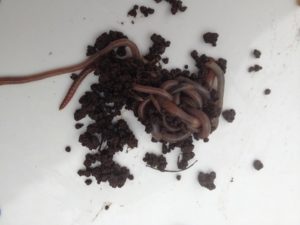Soil
Home > Soil > Influencing soil life > Earthworms
Earthworms
The most visible and probably best known soil organism is the earthworm. Earthworms are hermaphroditic but not self-fertilising. Eggs are deposited throughout the year. Depending on temperature and humidity, it takes 3 to 6 months for a worm to reach maturity. Potentially, earthworms can live for 4 to 8 years, but in arable land they don’t usually live for more than a few months. In times of drought, earthworms curl up in the soil and go into diapause. There are 18 species of earthworms in the Netherlands.

Earthworms are classified into three functional groups:
- leaf litter dwellers (epigeic species)
- soil dwellers (endogeic species)
- deep burrowers (anecic species).
Leaf litter dwellers (e.g. Lumbricus rubellus) live in the top layer of soil, especially in the sod of grasslands. They are red in colour and fast-moving. They help to break down crop residues and manure.
Soil dwellers (e.g. Aporrectodea calliginosa) are often the only worms that thrive in the tillage layer of arable land. It is a pale, slow-moving worm. It eats its way through the soil and is a major structure improver.
Deep burrowers (e.g. Lumbricus terrestris) are the largest earthworms in the Netherlands. They burrow vertically (up to a depth of 3 m) in soils with an undisturbed profile and a low water table. This worm has a red head and often a flat tail. It comes to the surface at night to look for plant residues, which it drags with it into the ground. Besides digesting organic matter, it improves water infiltration and allows deeper rooting.
The main functions of earthworms are:
- to break down organic material
- to supply nutrients
- to improve soil structure
- to mix soil particles
- to help with aeration
- water management
- to encourage rooting by burrowing into the soil


